Level I Study Page
This
online lesson program is not intended to be a substitute for riding lessons,
instead is is intended to be a thorough introduction for non-riders and a
valuable educational tool to riders. Horses can be unpredictable at times
and can cause harm to inexperienced handlers, please seek a professional
instructor or trainer when applying your knowledge learned during this online
lesson program.
1. Grooming
items:
Curry comb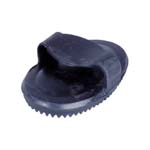 is used to remove loose hair and dirt on fleshy parts
is used to remove loose hair and dirt on fleshy parts
Hard body brush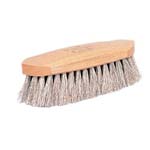 has
stiff bristles to remove caked on mud and dirt on body and legs.
has
stiff bristles to remove caked on mud and dirt on body and legs.
Soft body brush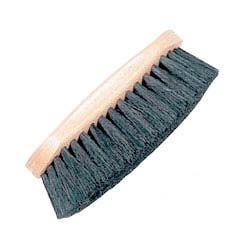 has
soft bristles to lay hair flat and shine coat.
has
soft bristles to lay hair flat and shine coat.
Mane and tail comb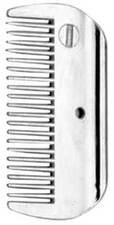 is similar to a comb you would use to comb your own hair.
is similar to a comb you would use to comb your own hair.
Hoof pick can be made
out of metal, hard plastic, or even have a wood handle.
can be made
out of metal, hard plastic, or even have a wood handle.
Finishing cloth can
be any clean cloth or towel.
can
be any clean cloth or towel.
2. Correct mounting and
dismounting procedure
Mounting
Stand on the left hand
side of the horse, facing the same direction as the horse. First make sure
your horse's cinch (or girth) is tight. Place both
reins around neck, grasp both reins and some mane with your left hand.
Place left foot in stirrup, grasp horn or pommel of the saddle with your right
hand. Smoothly bring your right leg over the back of the saddle.
While doing this maintain control of your horse with the reins. Keep right
leg straight as it clears the hindquarters of the horse. Slowly lower your
seat into the saddle-do not drop heavily onto the horse back. Find right
stirrup with your toe and slide foot into stirrup.
Dismounting
Hold both reins in your
left hand with a bit of mane. Grasp horn or pommel with right hand.
Take right foot out of stirrup and slowly swing it up and over hindquarters,
keeping leg straight. Step down on right foot, then take left foot out of
stirrup.
3. To safely lead a
horse...
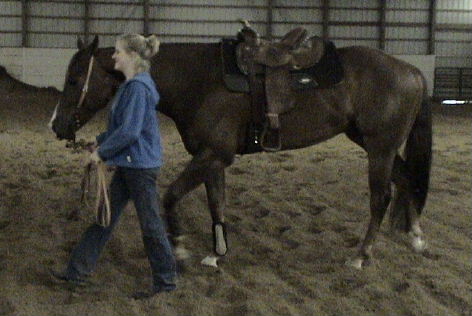
Proper method of leading a horse that is bridled
Always lead a horse from it's
left side. Horse should have on a halter or bridle. Hold lead (or
reins) about 4 inches from attachment to halter with right hand. Face the
direction you want to go and lightly pull forward on the lead to encourage
forward movement. Do not stand in front of the horse, instead stand even
with the horse's throatlatch (where the horses head and neck connect). You
may also make a smooching sound or cluck to help motivate the horse. Do
not look at the horse, instead look forward in the direction you wish to go.
While leading be sure to allow a safe distance between you and the horse.
Also, always wear appropriate footwear such as cowboy boots or riding boots.
Never wear open toed shoes. When you wish to stop, say whoa, and pull back
until the horse stops.
4. The correct position at
the halt and walk
While seated, your seat bones
should be in contact with the seat of the saddle. Back should be straight,
elbows held lightly to sides, hands out in front of pommel or horn, while
keeping a bend in the elbow. Eyes should be focused ahead in the direction
of travel. Legs should be under body, so that heel is in a straight line
with hip and shoulder. Knee is slightly in front of this imaginary line.
Heels lower than toe with the ball of the foot touching the stirrup.
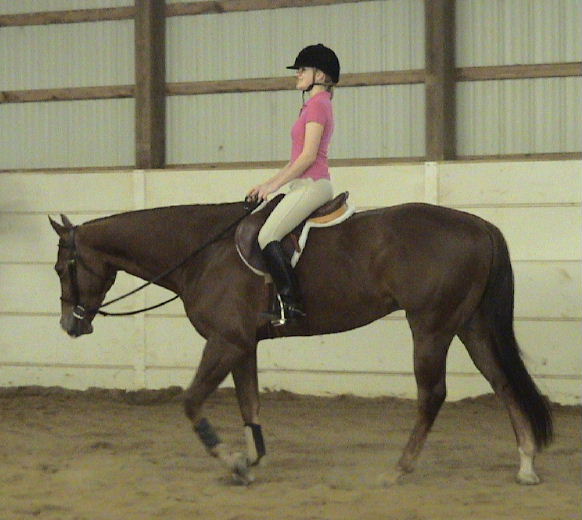
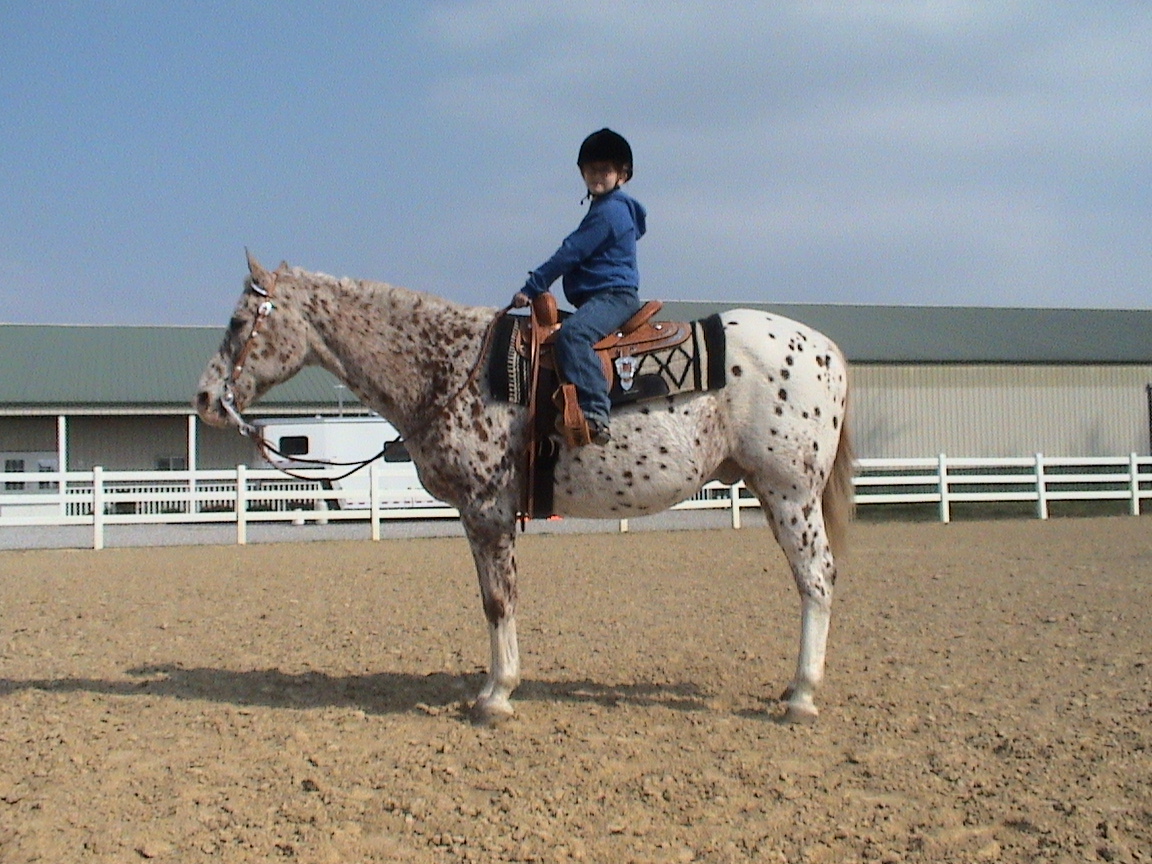
These riders are showing the proper position at
a walk and halt
5. The five natural aids
are:
Eyes, voice, hands, seat, and
legs
6. Horse parts
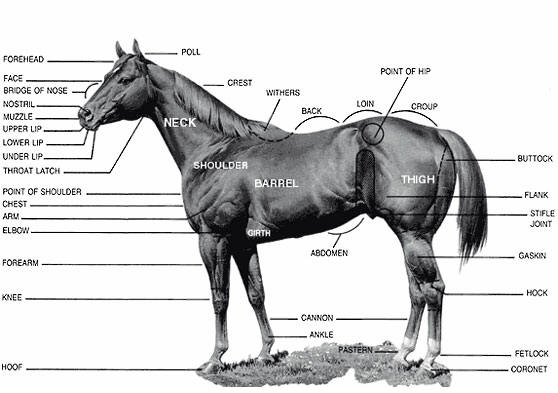
Click HERE to take Level I test
Click HERE to go back
to Online Lesson Program page
is used to remove loose hair and dirt on fleshy parts
 has
stiff bristles to remove caked on mud and dirt on body and legs.
has
stiff bristles to remove caked on mud and dirt on body and legs. has
soft bristles to lay hair flat and shine coat.
has
soft bristles to lay hair flat and shine coat.![]() is similar to a comb you would use to comb your own hair.
is similar to a comb you would use to comb your own hair.![]() can be made
out of metal, hard plastic, or even have a wood handle.
can be made
out of metal, hard plastic, or even have a wood handle.![]() can
be any clean cloth or towel.
can
be any clean cloth or towel.


